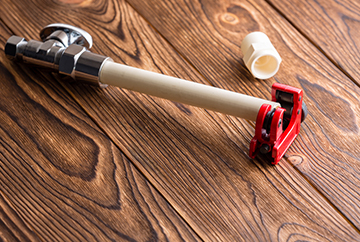2024 / 11 / 15
CPVC Pipes: A Sustainable Choice
With global climate change and increasingly scarce resources, sustainable development has become a global consensus. CPVC pipes, as an environmentally friendly, energy-saving, and efficient material, are gradually becoming an important force in promoting this process.
1、CPVC Originates from Nature
CPVC (Chlorinated Polyvinyl Chloride) is a thermoplastic plastic derived from polyvinyl chloride (PVC) resin through chlorination. Its molecules are further chlorinated modifications of polyvinyl chloride (PVC). In terms of weight, two-thirds of CPVC resin comes from salt extracted from seawater (brine), which is one of the most abundant resources on Earth. Only about one-third of the resin comes from petroleum resources.
From a macro perspective, plastics account for only 3% of the consumption of fossil fuels such as oil, coal, and natural gas, and chlorinated polyvinyl chloride is made from by-products of oil refining.
Due to its low petroleum content, the energy consumption required for CPVC production is lower than that of other plastic materials. As shown in the figure below

Because CPVC is a thermoplastic plastic, the cost of transportation can also be greatly reduced compared to the costs generated by copper pipes/steel pipes/stainless steel pipes, after all, energy consumption and costs are complementary.
2、CPVC is a Recyclable Option
In terms of recycling and recyclability, CPVC pipes can be recycled both in the manufacturing process and in the after-sales market. Discarded CPVC pipes can be reground into microparticles and pellets by professional recycling companies for the production of floor fillers, coatings, cable troughs, and other products, significantly reducing resource waste and environmental pollution. In some European countries and regions, professional recycling companies (specific regions and countries) will go to construction sites to collect pipe materials and reground them into microparticles and pellets, which can be used in floor fillers, floor coatings, cable troughs, speed bumps, and car mats, among other products.

3、CPVC Pipes Have Reliable Antimicrobial Properties Capable of Preventing the Formation of Biofilms
Pipes used in long-term transportation environments are highly susceptible to the formation of biofilms due to contact with microorganisms that adhere to their surfaces. The smooth surface and inner walls of CPVC pipes effectively inhibit the growth of microorganisms. This characteristic gives CPVC pipes a unique advantage in potable water transportation systems, ensuring the cleanliness and safety of water quality. Additionally, the antimicrobial properties also reduce frictional pressure losses in fluid flow, enhancing the operational efficiency of the pipeline system.
Rallychem Chemical's R&D team is continuously exploring CPVC production processes and modification technologies, committed to making CPVC production formulas more stable and efficient, and making the resolution of practical problems in the production process easier, constantly progressing and investigating.

You May Be Interested
RL - 1116S Polyester Wax: The Optimal Solution for SPC Ultra - thick Board (6mm) Internal Lubrication Challenges
2025 / 02 / 28
Comprehensive analysis of traditional PVC toughening agent: chlorinated polyethylene (CPE)
2025 / 01 / 26
Analysis of Plasticization Issues in PVC Pipes: Improving Production Quality and Efficiency
2025 / 01 / 26
Optimizing the production process of PVC conduit: improving surface smoothness and product competitiveness
2025 / 01 / 26
Why do PVC pipes have uneven inner and outer walls
2025 / 01 / 26


Whats App

For Inquiries Please Call
Rallychem Will Be Happy To Assist You!

+86 13456396233


info@rallychem.com

